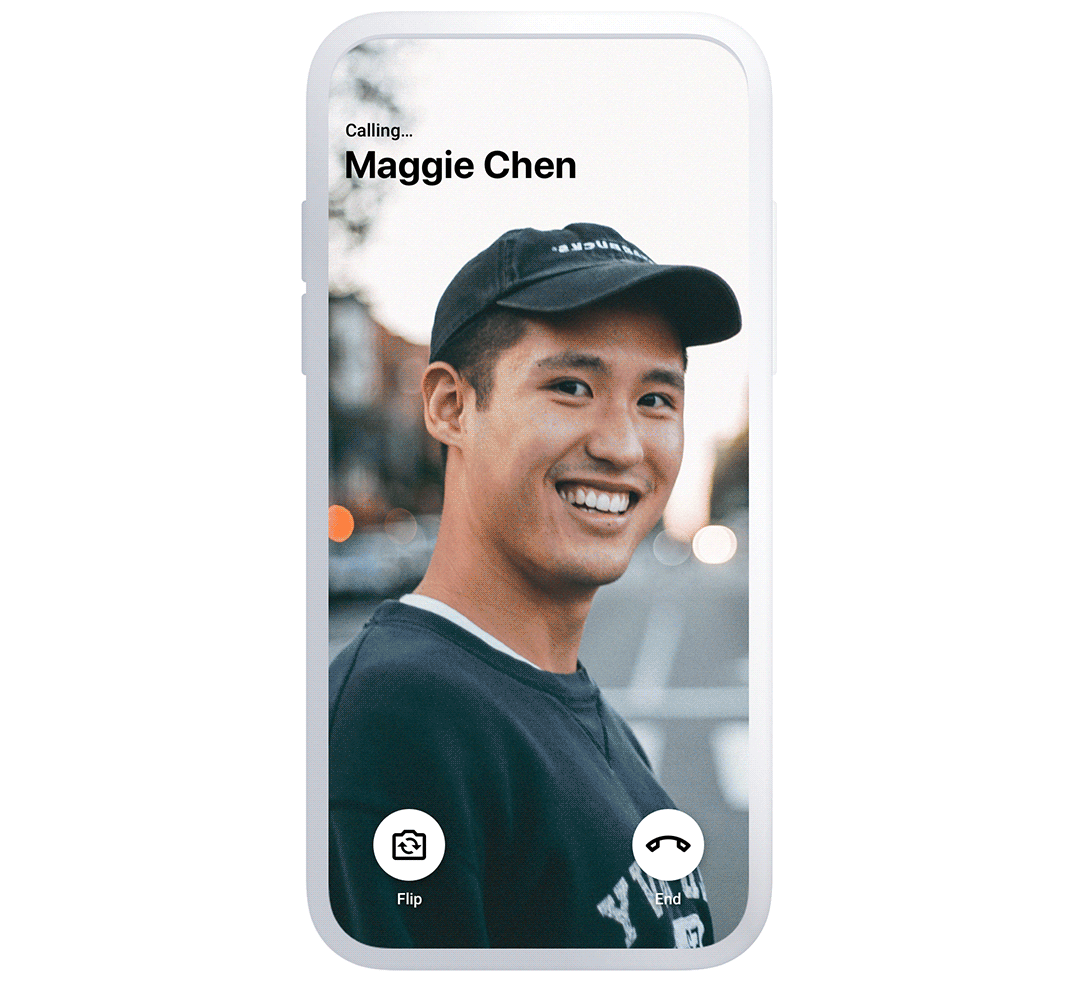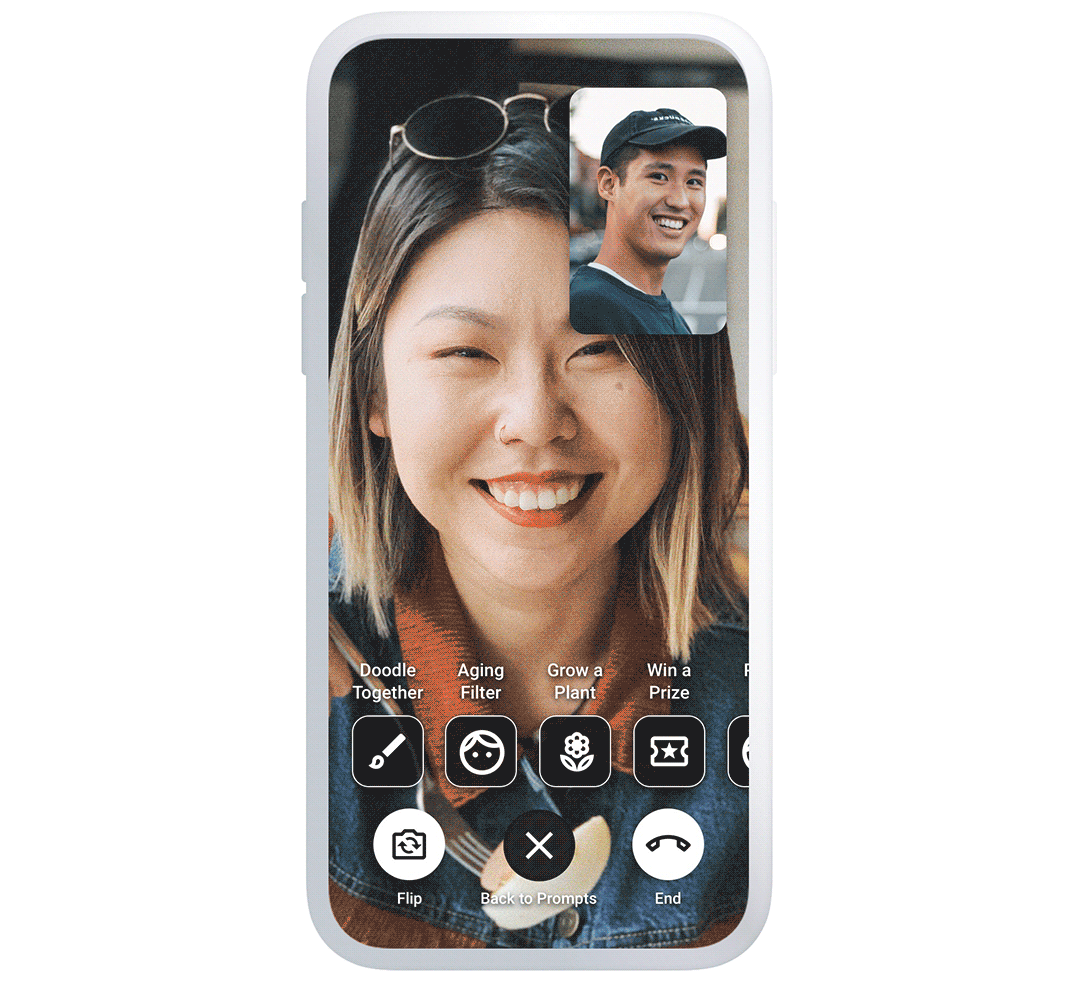
Connected, Apart: Feeling Supported in the Time of Isolation

“Dude, this is probably the best conversation I’ve ever had with you like, by far.”
Everyone deserves to feel supported when they face challenges. When we experience difficult emotions such as anxiety and fear, academic research has shown the benefit of having conversation with trusted loved ones to overcome low moods. But with globalization and personal preferences, we don’t always have the option to meet up with our friends and family in person or feel comfortable initiating in-depth conversations even with our loved ones.
HOW MIGHT WE FACILITATE BUILDING EMPATHETIC CONNECTIONS AMONG FRIENDS WHILE BEING APART?
Proposal
An extension for video call apps (such as Facebook Messenger) that facilitates in-depth conversations via guided prompts, real-time input, and activities.

Customize Conversation
Depending on who you talk to, select prompts you want to talk about from any categories. Don’t see anything related to what you want to talk about? You can enter your own as well!

Real-time Input
How are you feeling? Let your partner know how you feel as conversation progresses in real-time so they know your emotional needs.

Activity Options
Feel like the conversation is getting too heavy? Want to take your minds off things? Try some of the activities!
Role and Process
Initial problem identification via academic literature review on quarter-life crisis, adulthood, emotions and communication, technology influences, and semi-structured interviews. Ideated with generative approach with activity design, testing, observation, and iteration.

Literature Review
I’ve always been interested in human interaction and emotions, and those interest led me into exploring quarter-life crisis:

While it provides exciting opportunities for exploration, reconstructing self-identity can be stressful. Luckily papers in the field of narrative identity have shown that having conversations with responsive and attentive friends help construct your sense of self and identity. This is because in the process of narrating, you’ll need to connect your experience with your emotions and belief while explaining, and that helps further your sense of self.
Discovery
All of my total of 13 interviewees said they’ve experienced the anxiety, distress, and the disappointment caused by the clash of expectation and reality that comes along with this period of time. However, only half of them said they feel comfortable talking to friends or family to overcome these difficult emotions, and find these conversations helpful. The other half don’t feel comfortable talking about how they feel, even though they think having some in-depth conversations with trusted friends might be helpful. I’ve identified a few key reasons:
01 Tend to internalize their thoughts and emotions
02 Feel like it’s an emotional burden for others
03 It’s a personal task to revolve it themselves
04 Can’t identify the source of frustration
05 Think others won’t understand/worried being made fun of
Who’s My User?
While having an in-depth conversation should be available for everyone who seeks the support, my target users are the ones who want to talk about how they feel with close friends but don’t really know how to initiate the conversation.


I want to intervene in the last stage between self reflection and resolve. Without talking to friends and family, many can definitely motivate themselves back to focusing on their passion and goals. However, it can be a lonely path filled with pain and low mood. But if they can talk to their friends about their experiences and how they feel, while the problems might not solve themselves based on a conversation, the conversation offers the support to make the path less scary.
Ideation
I ideated by designing and testing a few activities and used the observation and feedback to design and test more. I experimented with giving speaker/listener guidelines, party games, and designing conversation prompts to see what works best to elicit organic flow of in-depth conversation.
After rounds of testing, giving participants (who trust/feel comfortable sharing with each other) guided prompts and options to do something fun can best foster conversation to feel connected and cheered up.



I first tested the guided prompts as in-person card game, but later decided to convert it into a video call conversation facilitation tool. Virtual space opens up a lot of possibilities:
01 Personalize prompts
02 Influence experience with real-time input
03 Stay connected regardless of distance
Now with the COVID-19 pandemic, we crave meaningful connections more than ever to help each other overcome fear, loneliness, and anxiety in the face of uncertainty.

User Flow & Wireframes





Testing Insights & Iteration
With the clickable prototype, I conducted usability testings and have discovered some insights:



Based on these findings, I decided that instead of designing a standalone video call app, it would serve my users needs and reach them more efficiently if it were a extension to an existing video call app such as Facebook Messenger Call or Instagram Video Call. This way, the users can start using the service with either people they’d wish to catch up with or specific friends without the friction of needing to download another app and requesting their friends to so as well.
Next Steps
After discussing with NYU professor Benedetta Piantella and media theorist Matthew Hockenberry, a few areas I’d like to explore further include
01 Other medium to overcome low moods in the virtual space
02 Using this model for other purposes such as team bonding
03 Possibility for in-person and digital hybrid